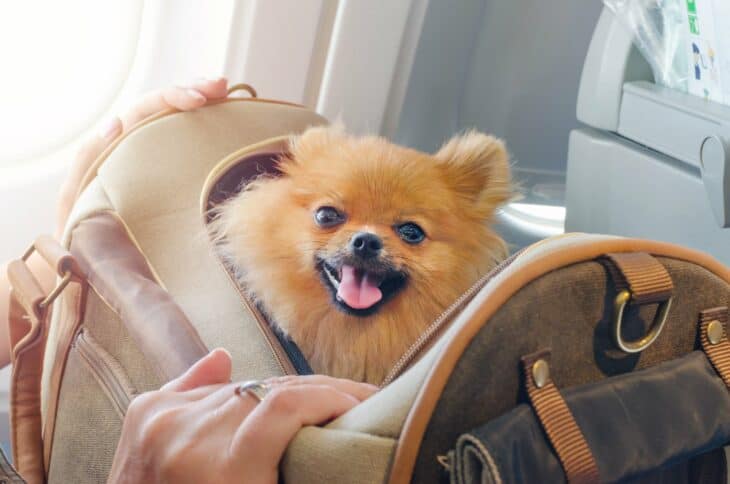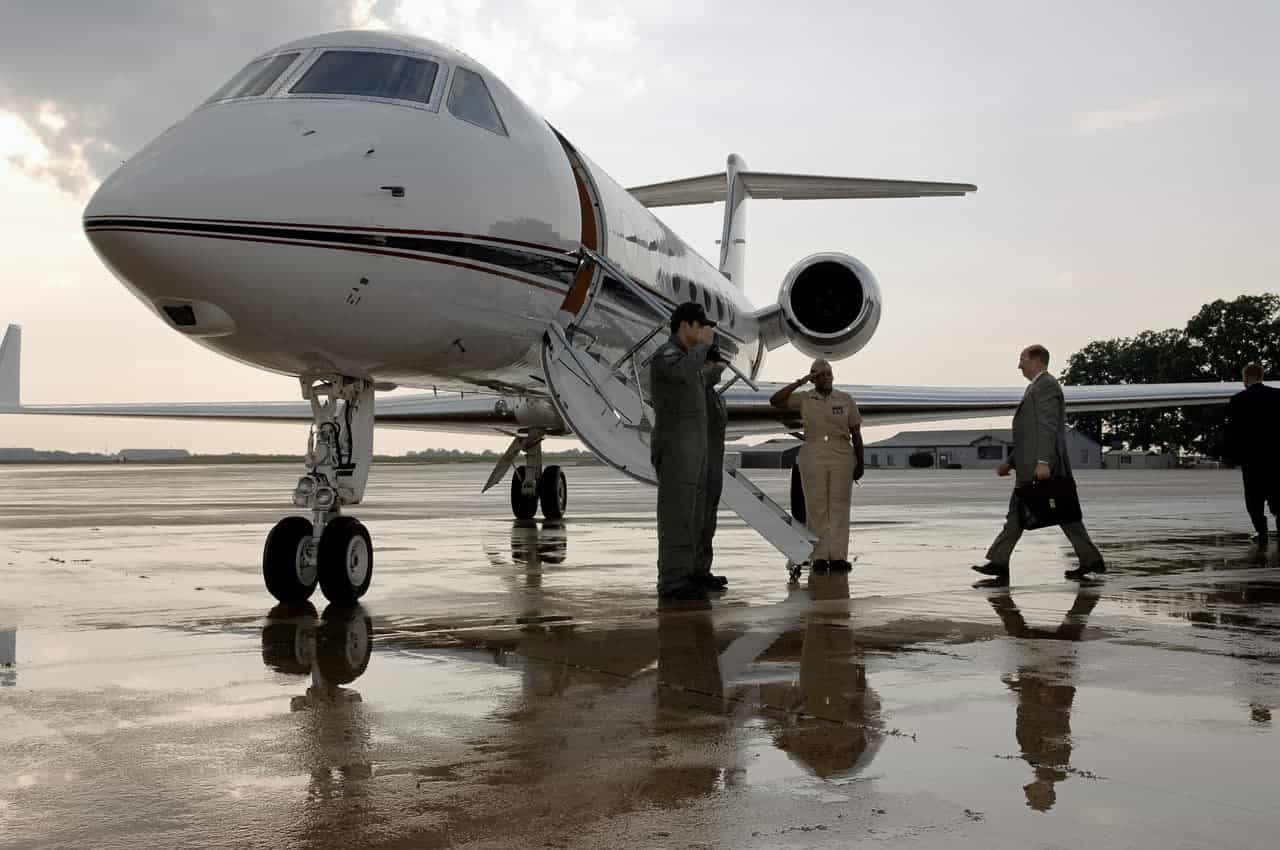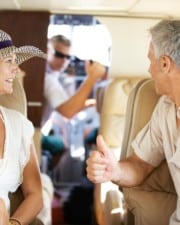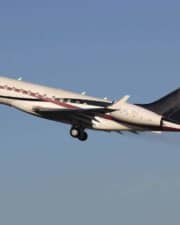Taking your pet on a commercial flight is nothing short of a nightmare. Private jets offer all the luxuries of a commercial flight, allowing far more customization of your flight, including who and what flies with you. With this in mind, you might be wondering if this customization extends to pets. So, can you bring your pets on a private jet with you?
You absolutely can bring your pets onboard a private jet. What’s more is that they can even go in the cabin with you! This means no more relegating your furry friends to the cramped cargo hold like they would have to on a commercial flight.
Can You Bring Pets on a Private Jet?
Not only can you bring your pet onboard a private jet, they can go in the cabin with you! This is because there are actually no restrictions on allowing in the cabin, it’s just that commercial airlines usually have policies banning them.
Nonetheless, private jet flights are subject to the same pet travel-related legislation that commercial airlines are, and as such, must be followed.
Though this varies from country to country – including both arrival and departure country (if different) – and the type of pet you own, pets traveling onboard private jets require a few things as standard near-universally:
- Pet travel documents (usually in the form of a pet passport)
- Medical certificates (which may include proof of vaccination against certain diseases, e.g. dogs and rabies)
Your air charter broker will be able to advise you on what the specific legislation is for the country or countries you are traveling between and tell you what documents and certificates are required for your specific flight.
It is worth noting that private jet operators are required by law to know who everyone on the flight for manifest and compliance purposes, this includes pets too, so their presence should be communicated to the broker during the booking process.
How Much Does it Cost to Fly a Private Jet with a Pet?
The cost to fly on a private jet with your pet really depends on the flight itself, the time of year you are flying and the size of the party and aircraft you fly on.
As a general rule of thumb, you can expect to pay around:
- $40,000 for a short haul flight with a small party
- $70,000 for a medium haul cross-country/international flight with a medium-sized party
- $100,000 for a long haul, transcontinental flight with a larger party
It’s worth noting that this is merely an estimate. As mentioned earlier, this figure does fluctuate, so the flight you are looking at may be more or less depending on a myriad of factors specific to your flight.
Likewise, it is also worth noting that most air operators charge an additional cleaning fee for those flights that have pets on board, as the aircraft will need a more thorough clean to prevent allergic reactions of future passengers and for general hygiene purposes.
This may be factored into the price of the flight, or charged after.
Do I Have to be on The Private Jet With My Pet?
If you take your pet with you on a commercial flight, it’s usually expected that you will travel on the flight with your pet unless otherwise cleared by the airlines.
On private jets, however, this is not necessarily the case. You don’t actually have to be on the jet with your pet while they travel!
This fact came to a head during the pandemic, when regular pet owners paid thousands of dollars to transport their pets home to them, as they had flown before lockdowns and travel restrictions had been implemented while their pets hadn’t.
Although this kind of arrangement did happen before the pandemic, it has become more popular, especially with wealthy pet owners and show pets.
What Animals Can I Take on a Private Jet?
While commercial airlines are often somewhat picky about the types of animals they’ll allow onboard, for the most part, private jet operators will allow any animal onboard their aircraft.
This means that aside from taking your common pets like cats, hamsters and dogs, you can also take more exotic animals like snakes, parrots and frogs among others.
However, it must be stated that some countries do have bans on the importation of certain animals (including some breeds of cats and dogs), which private jet operators must adhere to just like their commercial counterparts must.
Why do Airlines Require Pets to go in The Cargo Hold?
Pretty much all airlines require that pets on board their flights go in a special crate in the cargo hold. The reasons for this are simple: safety and convenience.
Anybody who’s traveled on a commercial flight in recent years can tell you that airline seats are cramped, especially in economy. Even the smallest pets will struggle to sit in the footwell of a standard seat for several hours, and the cabin is nowhere near large enough to accommodate roaming pets.
Like humans, pets also need to relieve themselves. Unlike humans, however, there are no designated pet toilet areas, meaning that if a pet does relieve themselves, it is going to need to be cleaned up, which poses hygiene and smell problems given most airliners have carpeted floors.
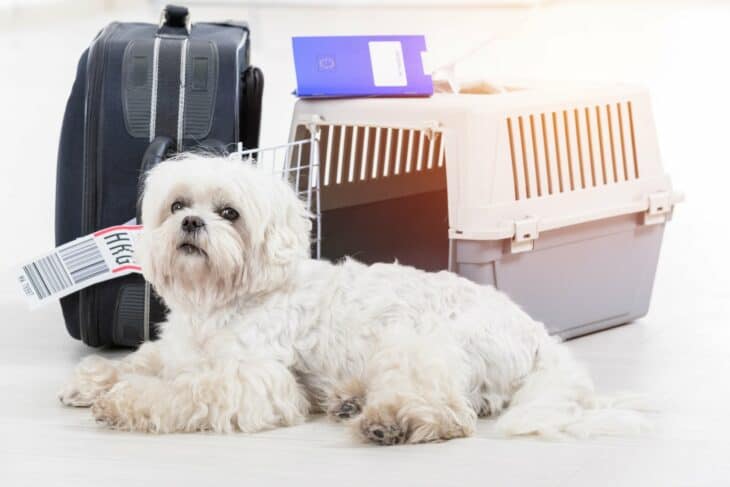
Similarly, people can also suffer from allergies to most types of household pets, including cats and dogs. Allowing pets in the cabin risks setting off other passengers’ allergies. After all, you don’t know when you book your ticket if the person next to you has an allergy or not.
By placing pets in their own crates in the cargo hold, all of these problems are mitigated, increasing passenger satisfaction and decreasing the airline’s risk from cleanliness and allergy-related lawsuits.
Are There Any Airlines That Allow Pets in The Cabin?
As of the time of writing, there are actually a fair few airlines that allow pets in the cabin, these airlines are:
- Aegean Airlines
- Air Baltic
- Air Belgium
- Air Canada
- Air Europa
- Air France
- Air Malta
- Alaska Air
- American Airlines
- Austrian Airlines
- Condor
- Delta
- Eurowings
- French Bee
- Iberia
- JetBlue
- LOT Polish Airlines
- Lufthansa
- Norwegian Airlines
- Southwest
- SWISS
- TAP Air Portugal
- TUI Fly
- Turkish Airlines
- United Airlines
- Vueling
However, these are not without caveats. All of these airlines place restrictions on your pet. Most only allow one pet per passenger, that they be below a certain weight, and even what kind of pets you can bring (for example, banning certain dog breeds, birds, reptiles etc.)
As each airline has their own policy, it is imperative you check with the airline before booking, either by calling them directly, or reading their policy.
That being said, there are currently a few dedicated pet airlines, which are a substitute to both conventional airlines and private jets.
These airlines, most notably Pet Airways, offer pet-only flights where your pet can travel in the cabin and is served by flight attendants during the flight!
Is Flying Safe For Pets?
Before you go about booking a flight for your pet, you might be wondering if flying is even safe for your pets. And to cut a long answer short: it depends.
Most obviously, it depends on the type of animal you have as a pet. Certain animals, or even certain breeds, are more susceptible to becoming ill or even dying when flying on an aircraft, either private or commercial.
This can best be seen in what veterinarians call “Brachycephalic Breeds” – or animals with short noses and flat faces (such as Bulldogs and Persian cats) as they are already prone to respiratory illnesses, which can be exacerbated by the rigors of flight.
The same can also be said for certain types of rodents, birds and reptiles, as pressurizing an aircraft (what causes your ears to pop when flying) can similarly cause respiratory problems for them.
That being said, for most pets, flying has no long term negative health impacts. However, flying itself can often cause distress for the animal, in particular those with pre-existing medical problems, anxiety and/or claustrophobia.
A skilled pilot, combined with a smooth takeoff, flight and landing, can seriously reduce animals’ anxiety and distress, making the flight better for them.
Related Posts
